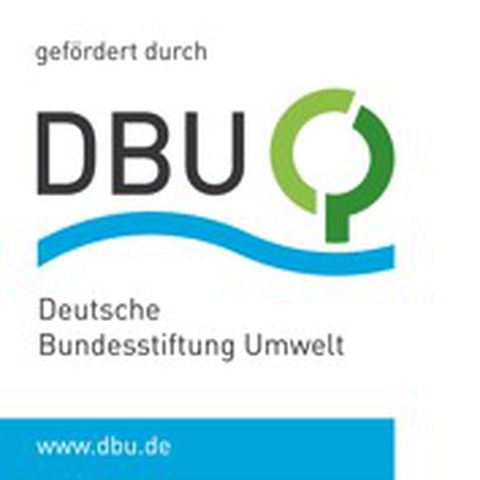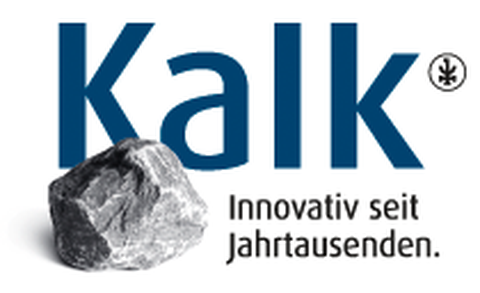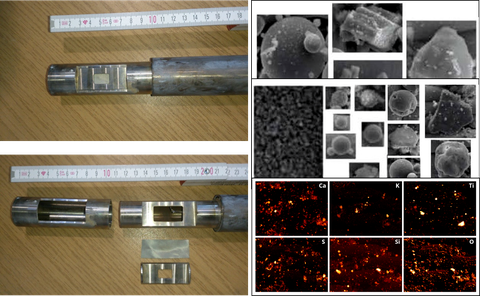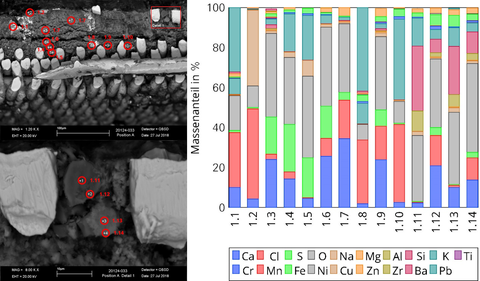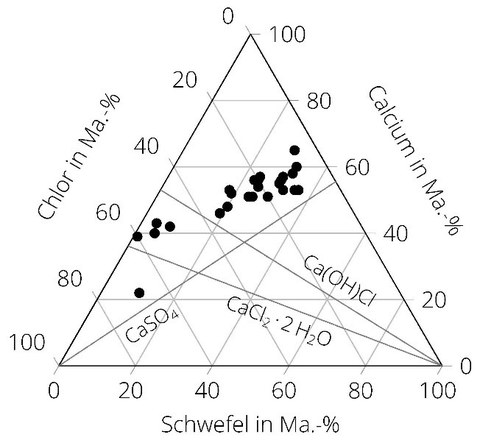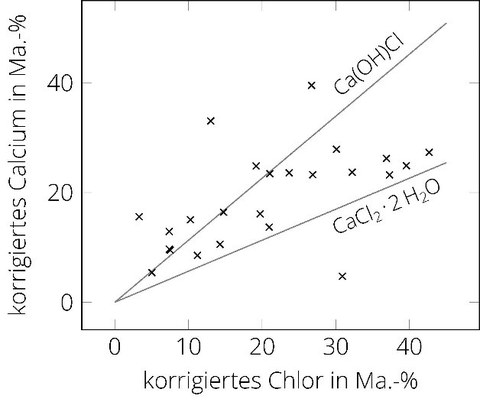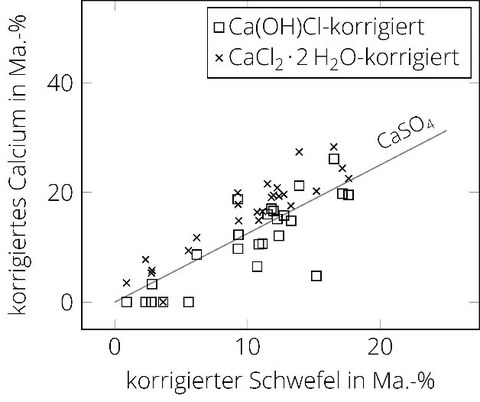PGNS
Title:
Investigation of possibilities for the development of the Particle Wire Mesh Probe (PGNS) method for use in the low temperature range in gas purification processes
Research Associate:
Dipl.-Ing. Martin Köhler
Duration:
11/2016 – 05/2020
Funding:
Deutsche Bundesstiftung Umwelt
Project partners:
CheMin GmbH, Forschungsgemeinschaft Kalk & Mörtel e.V.
Motivation:
Particulate matter or phenomena occurring on particles are also of decisive importance outside of filter systems in exhaust gas purification. Due to stricter environmental regulations, the separation efficiency of exhaust gas cleaning systems in power plants must be improved. In the case of reduction of nitrogen oxides and the associated excess of added ammonia, this can lead to the formation of hygroscopic salts in the SCNR / SCR downstream plant components such as filters, heat exchangers, catalytic converters, etc. Increased malfunctions and corrosion due to particle sticking are the result.
Another example is the optimization of the amount of used additives in exhaust gas purification systems. For example, hydrated lime is used in conditioned dry sorption as an absorbent of the acidic components of the flue gas from waste incineration plants and power plants with RDF or biomass firing (Figure 1). The reactions taking place in/on the hydrated lime particles within the entrained flow between injection and filter as well as on the filter itself are the most important basis for optimization.
Since the particles can change over the sampling time of e.g. particle impactors, a method has to be developed that provides a snapshot of the particles. With the method of the Particle Wire Mesh Probe (PGNS) this is available in principle (Figure 2). However, since it has so far proved its worth almost exclusively in the hot part of a power plant, it must be adapted to the new conditions and extended by sample conservation to interrupt the ongoing reactions. Analysis and conservation methods for samples obtained during conditioned dry sorption were tested for their suitability in laboratory experiments using pure substances and pure substance mixtures. These investigations were part of the completed preliminary project, whose final report can be obtained from the DBU under the following link.
https://www.dbu.de/projekt_33004/01_db_2409.html
In the further course of the project, the suitability of the method will be investigated by extensive field tests on flue gas cleaning systems. The research task here is to optimize the chlorine abatement during the conditioned dry sorption by an analysis of the injected hydrated lime particles depending on the residence time. In addition to the hydrated lime used, the flue gas temperature and flue gas humidity are influencing factors in this process.
This results in the following project goals:
- Identification of dominant reactions during chlorine abatement
- Optimization of existing flue gas purification plants with regard to chlorine abatement in order to reduce the need for additives
- Definition of environmentally relevant operating parameters through provocation tests with increased chlorine content
The following findings are available from the previous investigations within the main project:
- The particle morphology is strongly dependent on the process temperature and the process engineering itself. Flue gas cleaning processes with intensive partial additive recirculation show significantly smaller particles than processes without recirculation.
- Due to the accumulation of particles smaller than 2 µm on the grids, the identification of unreacted particle core and the associated reaction front is no longer possible in SEM EDS analysis (cf. Figure 3). Therefore, an evaluation strategy was developed in which main component diagrams (Figure 4) and binary distribution diagrams (Figure 5) are derived to obtain a statement about the course of the reaction.
- Sampling of different flue gas purifications showed that at the beginning of the reaction Ca(OH)Cl is the dominant calcium-chlorine species. At the end of the reaction CaCl2xH2O is dominant. This is confirmed by the literature, in which Ca(OH)Cl is regarded as an intermediate product on the way to CaCl2xH2O.
- In the kinetic models this has not been considered so far. The aim can now be to develop a model that takes the subsequent reaction into account. With the methodology developed in the research project a tool is available to validate these models on the real process.
Figure 1: Scheme of the conditioned dry sorption
Figure 2: Particle Wire Mesh Probe
Figure 3: exemplary element distribution
Figure 4: Main component diagram for the analysis of a flue gas cleaning plant of biomass cogeneration plant
Figure 5: binary distribution diagrams of the main components diagram above
Publications and presentations:
- Köhler, M., Ohle, A.; Beckmann, M.; Kaiser, M.; Spiegel, W.; Hammerschmidt, S.: Vergleich unterschiedlicher Kalkhydrate für die konditionierte Trockensorption anhand von Partikelanalysen im Realbetrieb, VGB Thermische Abfallbehandlung und Wirbelschichtfeuerung, Hamburg, 13.03.-14.03.2019
- Köhler, M.; Ohle, A.; Bernhardt, D.; Gebauer, K.; Beckmann, M.; Kaiser M.; Spiegel, W.: Survey on Methodes for Analysis and Conservation of Hydrated Lime Particles Sampled in Flue Gas Cleaning Systems. In: Ind. Eng. Chem. Res. 2018, 57, 14854-14860.
- Köhler, M., Ohle, A.; Beckmann, M.; Kaiser, M.; Spiegel, W.: Challanges of Using the Particle Wire Mesh Probe in Flue Gas Cleaning Systems. VGB Flue Gas Cleaning, Hamburg, 16.05.-17.05.2018
- Ohle, A.; Köhler, M., Beckmann, M.; Kaiser, M.; Spiegel, W.: Untersuchung der Chloreinbindung bei der trockensorptiven Rauchgasreinigung. DECHEMA-Jahrestagung Gasreinigung, Erlangen, 19.02.-20.02.2018
- Köhler, M.; Ohle, A.; Beckmann, M.; Kaiser, M.; Spiegel, W.: Adaption der Methode der PartikelGitterNetzSonde (PGNS) für den Einsatz im Abgasstrang. In: Beckmann, M.; Hurtado, A. (Hrsg.): Kraftwerkstechnik 2017 - Strategien, Anlagentechnik und Betrieb, Freiberg: SAXONIA Standortentwicklungs- und -verwaltungsgesellschaft mbH, 2017, S. 343-356. ISBN 978-3-934409-79-8.

